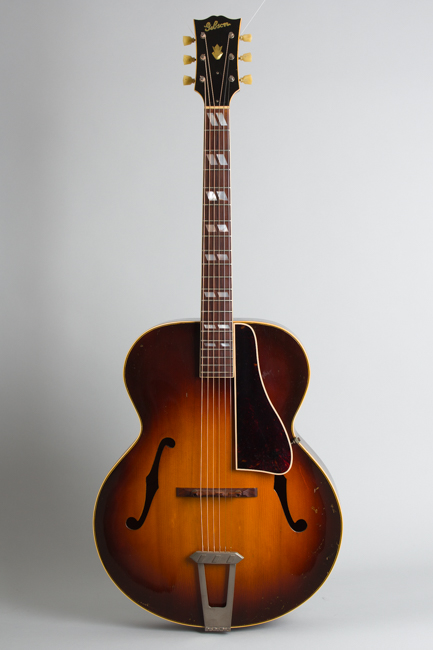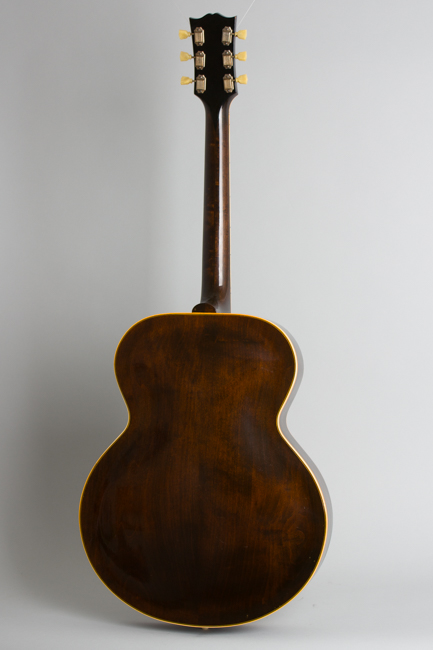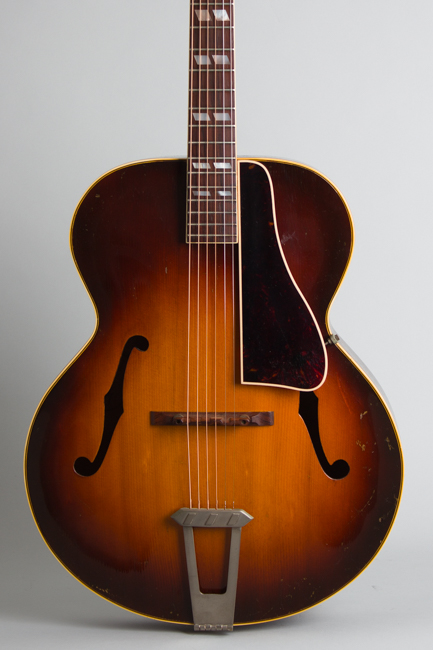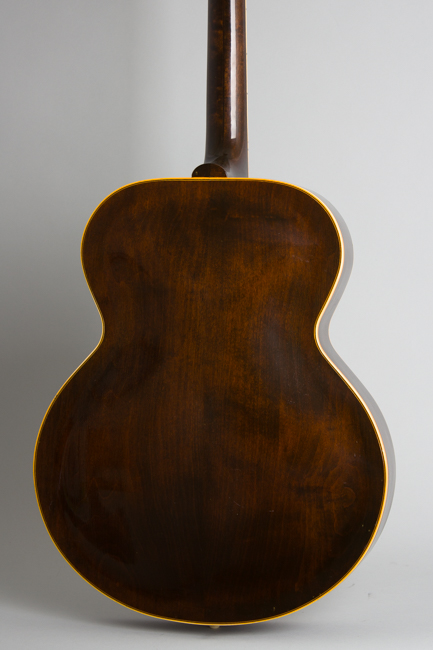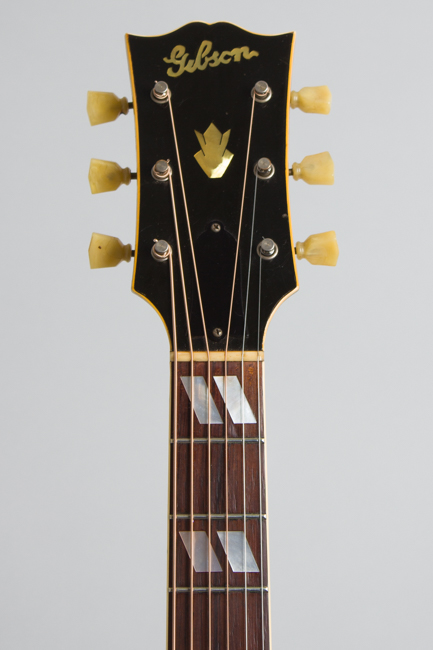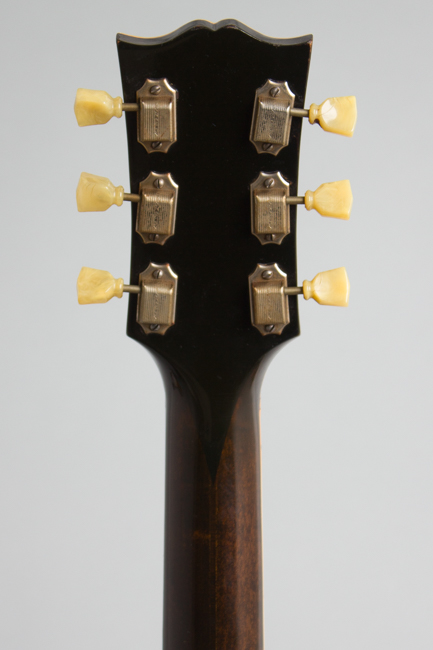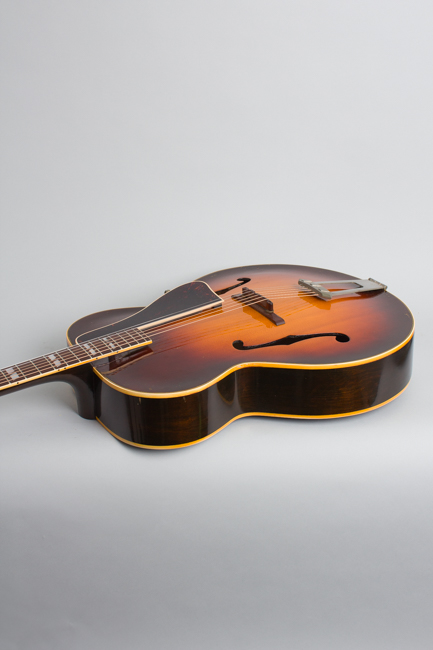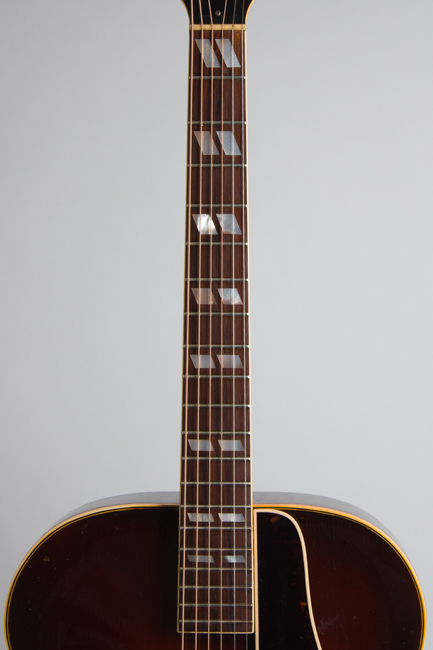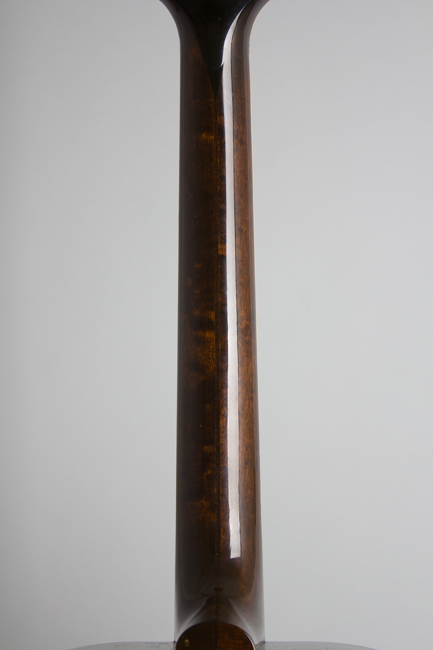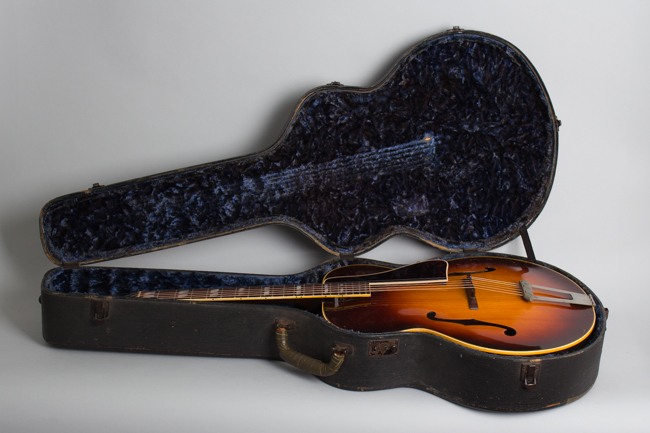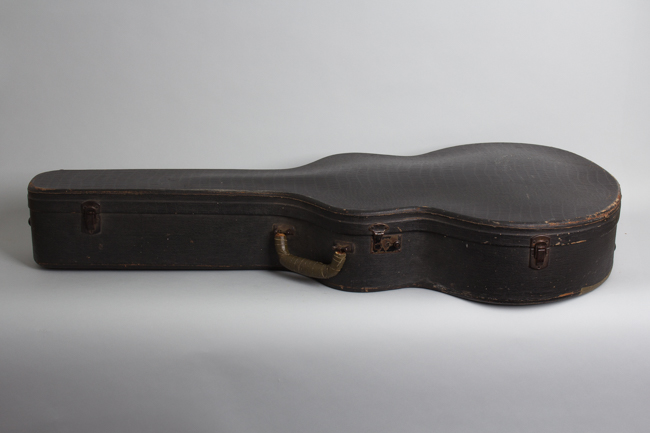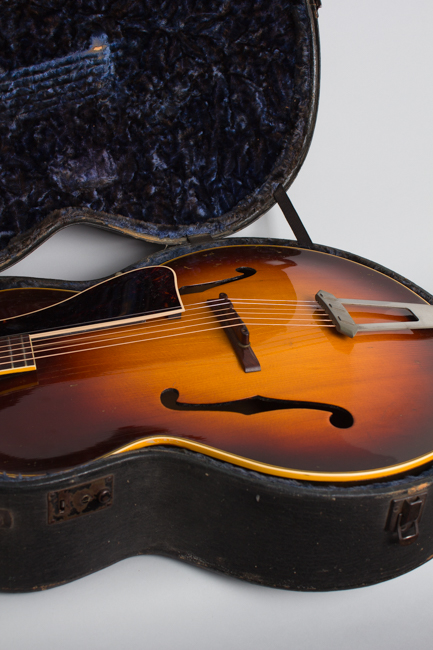Gibson L-7 Arch Top Acoustic Guitar (1947)
This item is currently on hold.
Item # 12903
Prices subject to change without notice.
Gibson L-7 Model Arch Top Acoustic Guitar (1947), made in Kalamazoo, Michigan, serial # 99469, sunburst top, dark back and sides finish, maple back and sides, spruce top; laminated maple neck with rosewood fingerboard, original black hard shell case.
This beautiful Gibson L-7 was bought new just after end of WWII and has remained in the original owner's family here in brooklyn ever since. It appears to have had a small repair to the back of the headstock VERY early on, with the tuners upgraded to c.1949 early closed-shell Kluson Deluxes. These is a small superficial splice added to the back of the neck/headstock join just under the tail of the "stinger", with original looking lacquer even viewed under blacklight in the area. This looks to have been done soon after the guitar was completed either at the factory (unlikely but possible in this era; Gibson usually just completely replaced damaged necks) or by the dealer. The fitting of these particular short-lived 1948-51 Klusons suggests this work dates to that period either way. In either case this is an insignificant repair structurally and does not affect the instrument.
This guitar was built as the Gibson company was returning to full time instrument production after years of primarily war work. The L-7 was one of the instruments that helped Gibson get up and running again, along with several flat-top models. This was Gibson's workhorse pro-grade 17" archtop guitar, offering professional features and sound without flash (or price tag) of the venerable L-5. The L-7 was a very popular model and proved a staple of the company's line for many years and proved a favorite not only of ambitious amateurs but also many pro players, even some who could have afforded a higher end model!
Features specific to this era include the older pre-war pearl Gibson script headstock logo over the "crown" inlay and a neck with a round and fairly chunky profile, though not so thick as some wartime guitars. The warm sunburst top and dark finished back have thick triple celluloid binding; the soundholes are unbound and the fingerboard and headstock are single-bound. The rosewood fingerboard features the double parallelogram inlay that became a post-war Gibson trademark. The tailpiece and bridge are typical period Gibson fittings; the pickguard is an exact repro of the deteriorated original.
This guitar does not seem to have seen too much professional use since the 1940s. Although it was reportedly played at home for decades, it shows only light wear. This purely acoustic L-7 a wonderful player with a quite versatile tone, well capable of sounding sweet while having a substantial reserve for pushing into swing rhythm territory.
Overall length is 42 3/8 in. (107.6 cm.), 17 in. (43.2 cm.) wide at lower bout, and 3 3/8 in. (8.6 cm.) in depth, measured at side of rim. Scale length is 25 1/2 in. (648 mm.). Width of nut is 1 11/16 in. (43 mm.).
Despite the passage of nearly eight decades since it was made this remains a lovely original guitar. Apart from the minor headstock repair (which is not conspicuous) there are no other visible cracks to the instrument. In general there is fairly minor wear; some scuffing and checking to the finish overall with dings, scratches and chips here and there, mostly some deeper dings to the lower top below the treble side F-hole. The finish still shines like it did when Harry Truman sat behind the Presidential desk.
The pickguard is a recent Paul Fox replacement, all other hardware is original (or in the case of the tuners, period). The original small-wire frets show some light wear but still play and the guitar sounds excellent. This very fine postwar one-owner L-7 is housed in a lovely original HSC with an ancient replaced handle. Overall Very Good + Condition.
This beautiful Gibson L-7 was bought new just after end of WWII and has remained in the original owner's family here in brooklyn ever since. It appears to have had a small repair to the back of the headstock VERY early on, with the tuners upgraded to c.1949 early closed-shell Kluson Deluxes. These is a small superficial splice added to the back of the neck/headstock join just under the tail of the "stinger", with original looking lacquer even viewed under blacklight in the area. This looks to have been done soon after the guitar was completed either at the factory (unlikely but possible in this era; Gibson usually just completely replaced damaged necks) or by the dealer. The fitting of these particular short-lived 1948-51 Klusons suggests this work dates to that period either way. In either case this is an insignificant repair structurally and does not affect the instrument.
This guitar was built as the Gibson company was returning to full time instrument production after years of primarily war work. The L-7 was one of the instruments that helped Gibson get up and running again, along with several flat-top models. This was Gibson's workhorse pro-grade 17" archtop guitar, offering professional features and sound without flash (or price tag) of the venerable L-5. The L-7 was a very popular model and proved a staple of the company's line for many years and proved a favorite not only of ambitious amateurs but also many pro players, even some who could have afforded a higher end model!
Features specific to this era include the older pre-war pearl Gibson script headstock logo over the "crown" inlay and a neck with a round and fairly chunky profile, though not so thick as some wartime guitars. The warm sunburst top and dark finished back have thick triple celluloid binding; the soundholes are unbound and the fingerboard and headstock are single-bound. The rosewood fingerboard features the double parallelogram inlay that became a post-war Gibson trademark. The tailpiece and bridge are typical period Gibson fittings; the pickguard is an exact repro of the deteriorated original.
This guitar does not seem to have seen too much professional use since the 1940s. Although it was reportedly played at home for decades, it shows only light wear. This purely acoustic L-7 a wonderful player with a quite versatile tone, well capable of sounding sweet while having a substantial reserve for pushing into swing rhythm territory.
Overall length is 42 3/8 in. (107.6 cm.), 17 in. (43.2 cm.) wide at lower bout, and 3 3/8 in. (8.6 cm.) in depth, measured at side of rim. Scale length is 25 1/2 in. (648 mm.). Width of nut is 1 11/16 in. (43 mm.).
Despite the passage of nearly eight decades since it was made this remains a lovely original guitar. Apart from the minor headstock repair (which is not conspicuous) there are no other visible cracks to the instrument. In general there is fairly minor wear; some scuffing and checking to the finish overall with dings, scratches and chips here and there, mostly some deeper dings to the lower top below the treble side F-hole. The finish still shines like it did when Harry Truman sat behind the Presidential desk.
The pickguard is a recent Paul Fox replacement, all other hardware is original (or in the case of the tuners, period). The original small-wire frets show some light wear but still play and the guitar sounds excellent. This very fine postwar one-owner L-7 is housed in a lovely original HSC with an ancient replaced handle. Overall Very Good + Condition.
